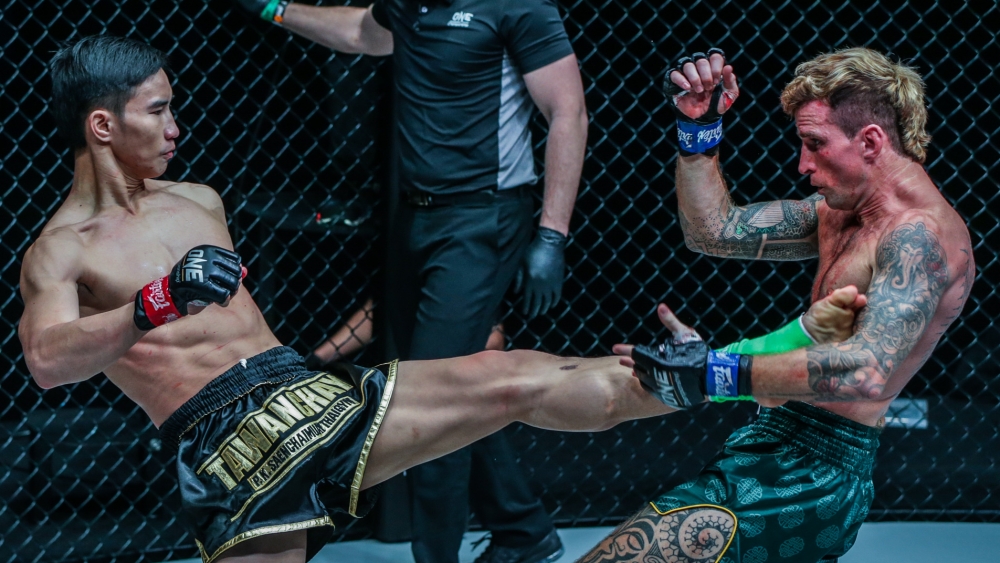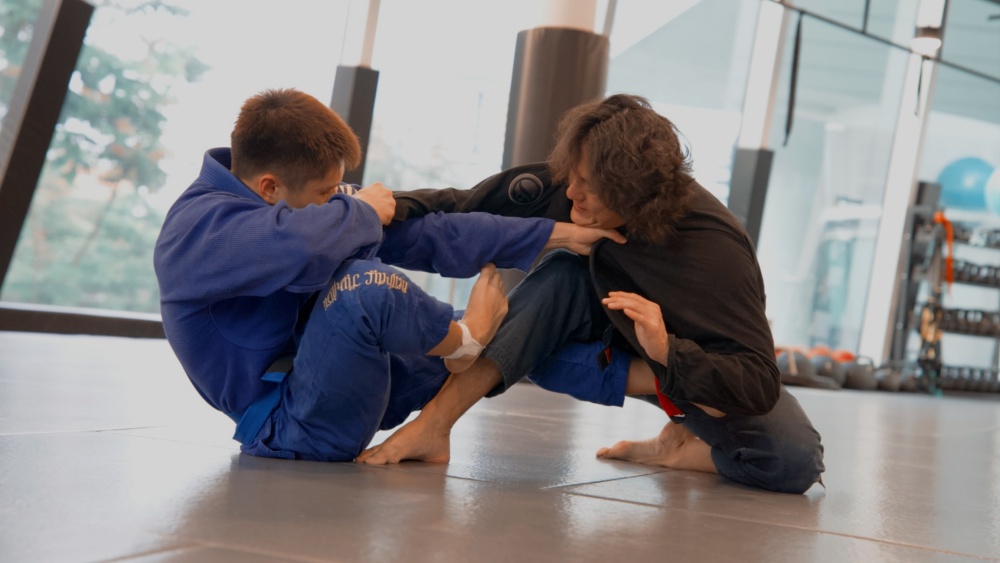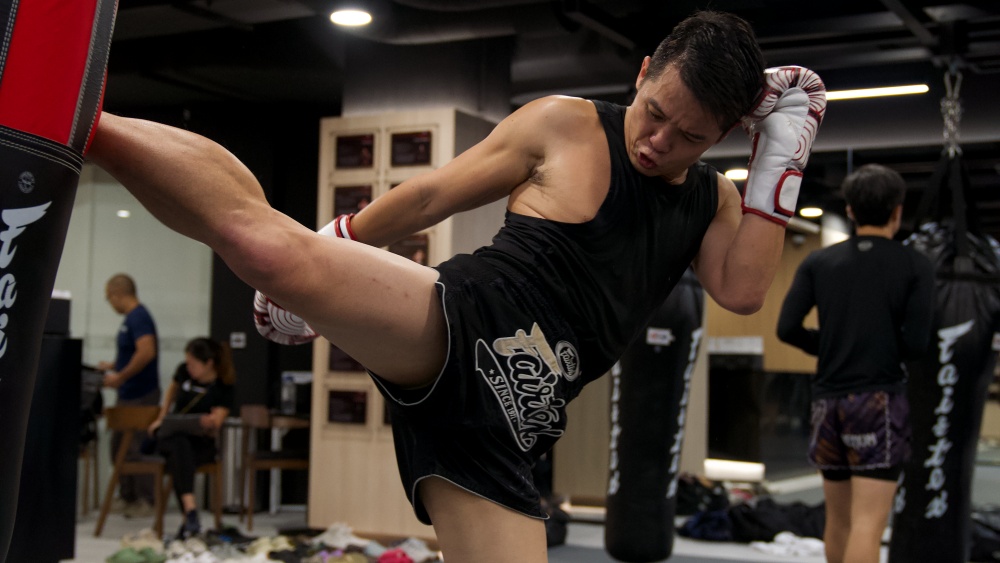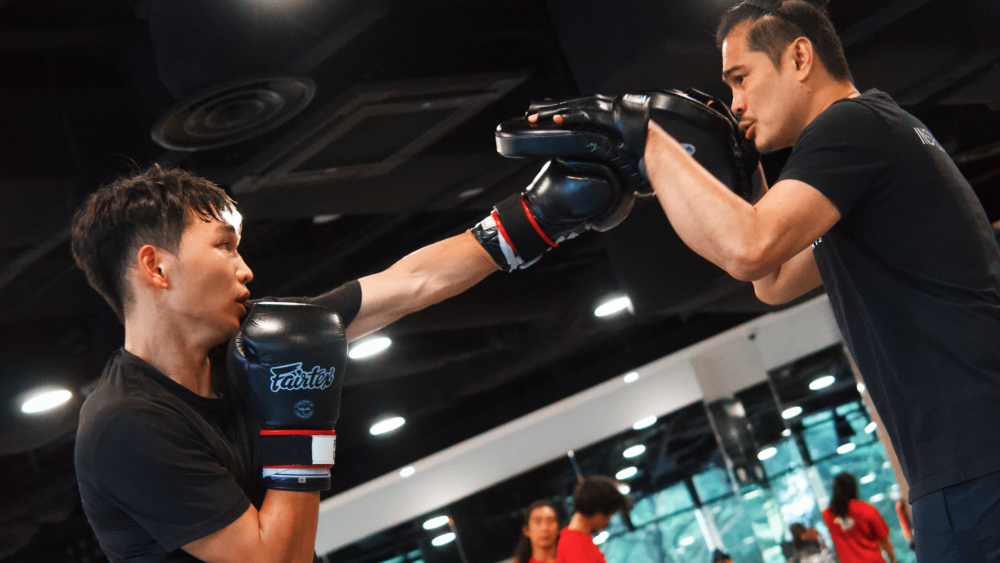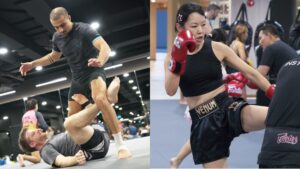Grips are an important and necessary part of the Muay Thai clinch. While some fighters may prefer to grab the arms in order to control their opponents and maintain the space needed to throw elbows, grips give greater control over your opponent’s posture and balance, creating the opportunity to sweep and knee with impunity.
In clinching, a grip is any position in which you have your hands locked together to create a strong lock with your arms. Apart from being able to control your opponent’s balance and posture, tight grips also provide relative safety from elbows and, in some cases, can even help you avoid getting kneed.
In this article, we are going to introduce 6 of the most important grip positions in Muay Thai. We’ll explain how to execute these techniques and give you advice on how to use them to your advantage in the ring. So, without further introduction, here are the 6 most important grips you need in your Muay Thai clinch arsenal.
1) Double Collar-Tie
The double collar-tie is the most dominant and well-known clinch position in Muay Thai. It is a fairly easy position to get into once you have both of your arms inside of your opponent’s gloves and because of this, it is a popular grip used by fighters at every level.
With both arms inside of your opponent’s, lock your palms together around their neck so that your gloves are pressing down on the top of their head and your elbows are tight to their collarbone. With your elbows locked down in this position you can crank on their neck, breaking their posture whilst also making it difficult for them to slide under your arms and counter with a body lock. Once you have broken their posture it is easy to pull them off balance to land devastating knees to their body and head.
2) The 50-50 Position
The 50-50 position in the clinch is a common “stalemate” position where neither fighter is at an advantage or disadvantage as long as they keep their gloves gripped together. A 50/50 grip is achieved when both fighters have a single collar-tie each with their second arm wrapped around their opponent’s collar-tie, joining their inside arm at the back of their neck.
While this isn’t a dominant position a strong 50-50 grip is needed to transfer into a single collar-tie and overhook or underhook position and can be used to negate a strong clincher’s attack.
3) Single Collar-Tie And Overhook
From the same video from point one at 0:21 seconds, the single collar-tie and overhook combine the dominant collar-tie position with tight-gripped arm control, allowing you to knee or sweep your opponent to your heart’s content.
In this variation, you will usually begin in the 50-50 position, with one arm inside and controlling your opponent’s neck with your other arm stuck outside theirs while your neck is held tight. Winding your arm underneath and inside your opponent’s elbow, you’ll then push your glove high, punching to the roof. Then, you’ll loop your arm over and around theirs as if you are placing their bicep in a guillotine choke while pulling it off of your neck. From here you can pull on the arm and neck, dropping your weight to create space for massive knees to the body, or using your purchase on their arm, you can pull them laterally into a sweep.
4) Single Collar-Tie And Underhook
The single collar-tie with an underhook, also known as the “seatbelt” position, is an incredibly dominant position where, after cutting an angle on your opponent from within the clinch, you can knee them at will.
To get in this position you begin by being 50-50 with your opponent, with one arm inside and the other outside. If their inside arm is relaxed, or you are able to remove their elbow from your collarbone, you can slide beneath it and pivot around their body so that you are standing at ninety degrees to them with your head on their chest, and their foot trapped between your legs. Locking your palms tightly together your arms will cut from over their shoulder to under their armpit, like a seatbelt.
5) Cross-Face
Referencing the same video as above at 0:24 seconds, the cross-face grip is a position that you can attach off the back of the underhook, the “seatbelt” position of the clinch. When done correctly it is a great way to lower your defenseless opponent’s face down into your oncoming knees for a knockout finish.
From the underhook position, release your hand and thread the glove that was on the back of your opponent’s neck so that it’s pressed to the side of their face. Then, stand up tall and push their face away by straightening your arm. As you straighten your first arm, take your second hand and lock it over your first so you are pushing their head down with two straight arms. Once their posture is broken and your arms are fully extended, they will be defenseless against your incoming knees.
6) Body Lock
At the 0:31 second mark in the same video mentioned above, a body lock is, essentially, a bear hug around your opponent’s body or chest. In the clinch, you will often find your way into this position if your opponent attempts a collar-tie with relaxed elbows and doesn’t lock them into your collarbone, giving you the opportunity to slide underneath both arms and clasp your hands around their body. With your arms gripped securely beneath their armpits you can knee your opponent without allowing them the space needed to grip your neck and break your posture.
From this position it is quite easy to land several sweeps and dumps but be careful, you don’t want to squeeze your opponent to topple them directly backward. Not only is “breaking the back” a foul in Muay Thai, but it is also incredibly dangerous for your opponent and can cause permanent injury. If you do want to sweep them from this position, consider learning the body lock clinch throw.
You may also like:



